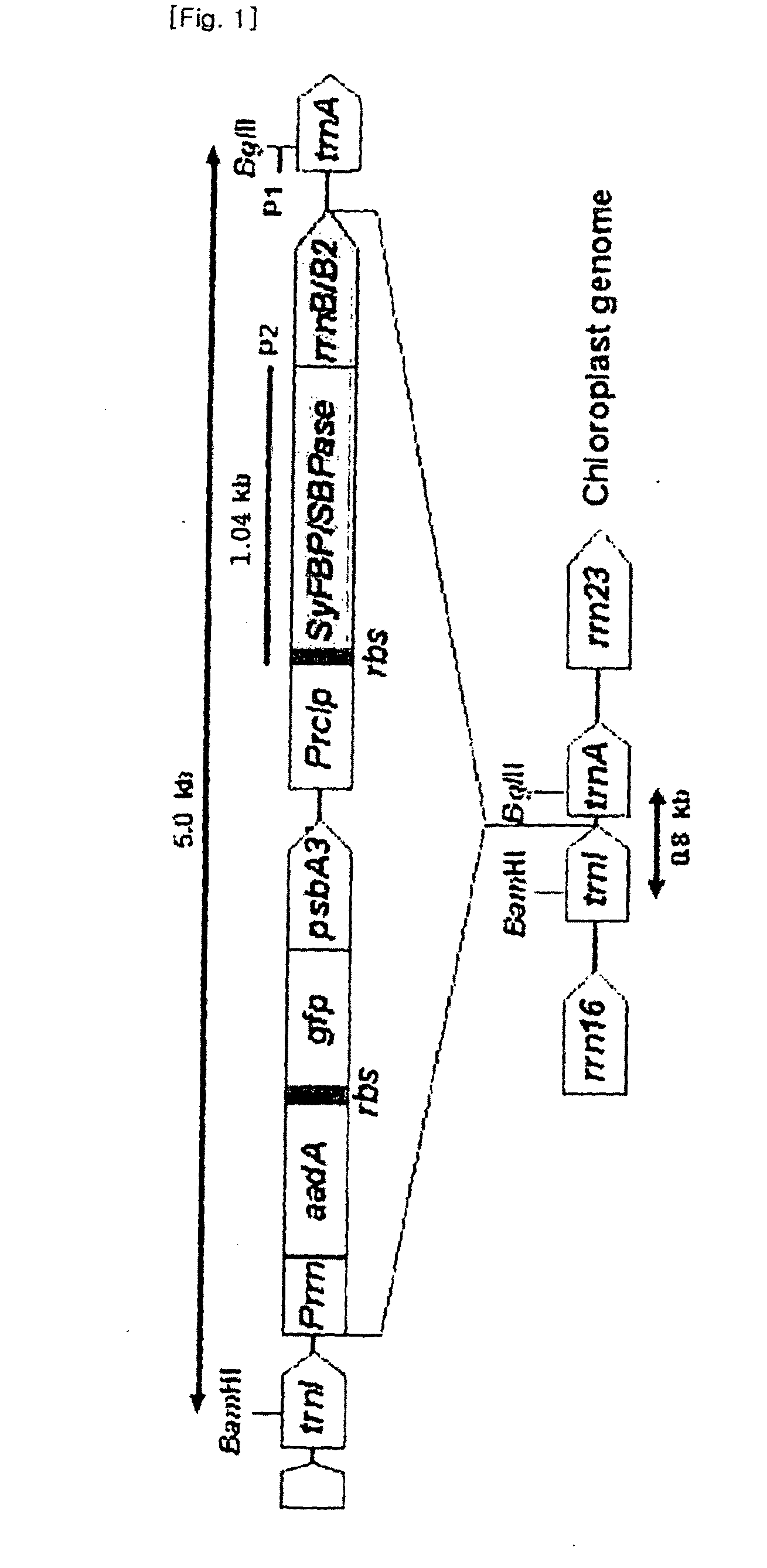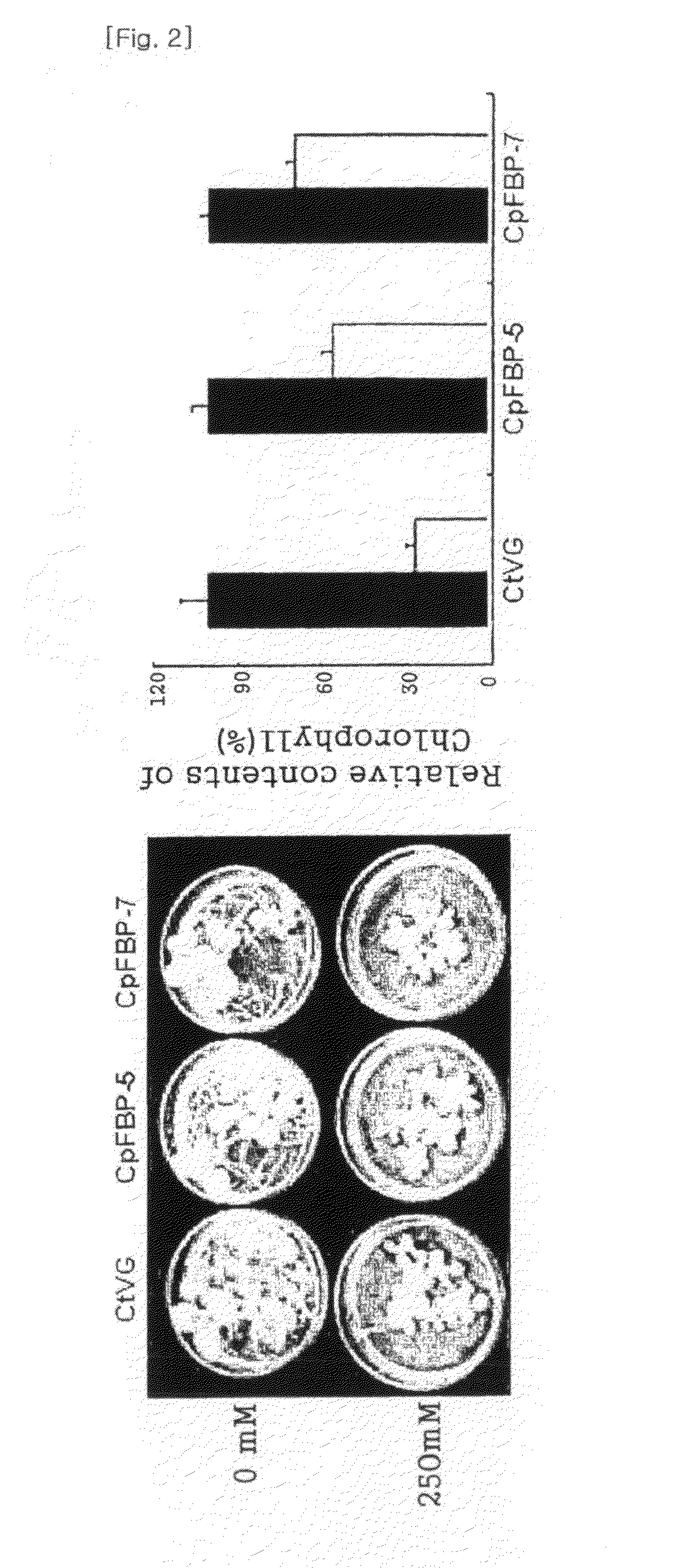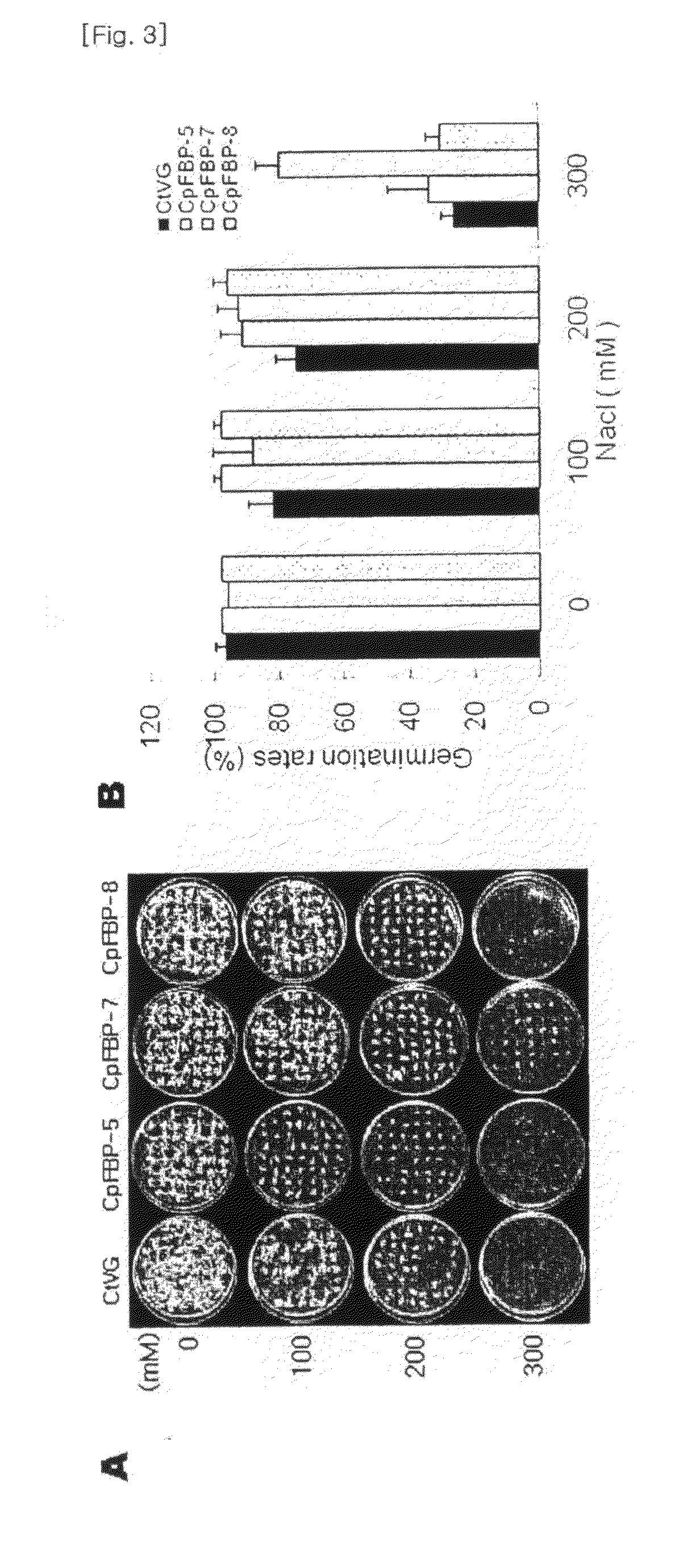Method for increasing salt tolerance of plant by overexpressing syfbp/sbpase gene isolated from synechocystis and plant produced by the same
a plant and syfbp technology, which is applied in the field of increasing salt tolerance of plants, can solve the problems of reducing crop productivity, affecting the water-absorbing property of plants via roots, and affecting the production efficiency of plants, so as to achieve the effect of improving salt tolerance of plants
- Summary
- Abstract
- Description
- Claims
- Application Information
AI Technical Summary
Benefits of technology
Problems solved by technology
Method used
Image
Examples
example 1
Selection of a Vector for Chloroplast Transformation and a Transformed Tobacco Plant
[0050]Within the vector for chloroplast transformation, a nucleotide sequence region has been inserted for homologous recombination. For the expression of a selection marker, Prrn promoter and psbA 3′ UTR were utilized. For the expression of FBP / SBPase (slr2094) gene, which has been found from Synechocystis spp. PCC 6803, Clp promoter and rrnB1 / B2 terminator, separated from rice and Escherichia coli, respectively, were used (see FIG. 1). Five individual transformed tobacco plants T0 (CpFBP-1, -2, -5, -7, and -8) were subjected to Southern blot analysis to confirm that the foreign gene has been successfully inserted into the plant. Seeds of the T0 plant were germinated in a selection medium which comprises spectinomycin as antibiotics for selection. Thus-obtained T1 generation was confirmed again by Southern blot analysis. As a result, a band that is the same as that of T0 plant was observed, suggesti...
example 2
Determination of Salt Tolerance of the Tobacco Plant which has Been Subjected to Chloroplast Transformation with SyFBP
[0051]1. Amount of the Chloroplast
[0052]CpFBP-5 and CpFBP-7 seeds of which chloroplasts have been transformed with FBP (SyFBP / SBPase) gene isolated from Synechocystis PCC 6803 and T1 seeds of CtVG control vector group were sterilized and placed in a medium to which MSBM500Sp (MS basal medium+3% sucrose+500 mg / L spectinomycin+0.6% phytoagar) has been added, followed by incubating them for 2 weeks at 25° with lighting condition of cool-white fluorescence of about 40 μmol·m−2·sec−1. After transplanted in the MSBM liquid medium comprising 0.250 mM NaCl, the seeds were incubated for five days and the amount of the chloroplast was measured.
[0053]When the amount of the chloroplast was measured after the salt treatment, it was found that the tobacco plant which has been transformed with SyFBP / SBPase has higher tolerance to salt compared to the control group plant comprising ...
PUM
| Property | Measurement | Unit |
|---|---|---|
| pressure | aaaaa | aaaaa |
| diameter | aaaaa | aaaaa |
| pH | aaaaa | aaaaa |
Abstract
Description
Claims
Application Information
 Login to View More
Login to View More - R&D
- Intellectual Property
- Life Sciences
- Materials
- Tech Scout
- Unparalleled Data Quality
- Higher Quality Content
- 60% Fewer Hallucinations
Browse by: Latest US Patents, China's latest patents, Technical Efficacy Thesaurus, Application Domain, Technology Topic, Popular Technical Reports.
© 2025 PatSnap. All rights reserved.Legal|Privacy policy|Modern Slavery Act Transparency Statement|Sitemap|About US| Contact US: help@patsnap.com



